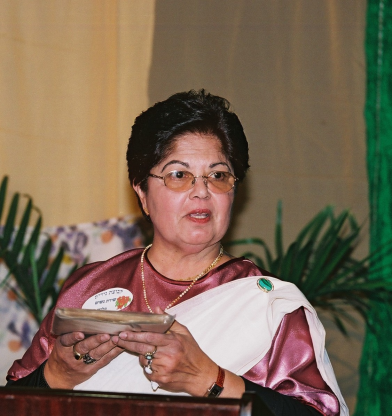
This number opens the final section of the entire album consisting of four dance-tempo songs that correlate to the more advanced playing level. This song may be classified as a humoristic-satiric Eastern-European Jewish folksong. About this category Stutschewsky wrote two important statements which relate to the song in question:
A national characteristic is especially apparent in the humor of Eastern-European Jews. In the humoristic-satiric song this feature comes to a most convincing guise. The Jews have a special sense for humor, parody, satire and irony. Amidst no other folk can we find such developed self-irony, as among the Jews, i.e. joking and laughing at one own defaults and impediments.[1]
Nevertheless, one may discern an element of self-edification [original emphasis] in the Jewish humor and in the Jewish joke. Most of the humoristic and satiric folksongs and tunes elaborate around these axis: doubts in the human existence, arbitrariness and compulsion in our lives, the weakness of human capability, the life conditions of the Jews in the diaspora, the wish to surprise, to break out of order, the special characteristics of the Yiddish, the word-games and more.[2]
Bulbe, much like Die alte kasche, was at the time a canonic Yiddish folksong. If Die alte kasche represented the deep and the philosophical, this song related to the everyday life concerns of Eastern-European Jews with a healthy amount of irony. Considered a popular children song as well, it taught the days of the week following the basics of Eastern-European Jewish cuisine. This teaching was spiced with seeds of laughter and self-edification through the catchy, lively tune.
Pesach Lwow’s G natural minor arrangement of Bulbe in the Lieder Sammelbuch is subtitled “children’s song.” and has a conventional harmonization (Kisselgoff, Schitomirsky and Lwow 1912, no. 29). Contrary to previous numbers in the album, here Stutschewsky retained this conventional harmony, and assigned the piano part a typical klezmer um-pah accompaniment pattern. Stutschewsky’s arrangement is in B minor due to similar pedagogical considerations as described above in the notes to number 8.
In contrast to the preceding dark arrangement, this number transmits a positive, kinderwelt style spirit. Stutchewsky refrained from the modernistic language that dominates the album in favor of a more conventional soundscape. Outstanding is the chromatic two hands descending sixteen notes swirl, underlining the song’s climax in forte in both instruments in bars 7-8. The two closing bars slow down into piano, etwas langsamer, enhancing the elegant humoristic ending.
__________________________________________
[1] J. Stutschewsky, ibid., p. 46.
[2] Ibid., p. 47.





